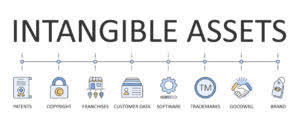Contra Account: A Complete Guide + Examples Xero accounting
by 24@Help

Because of the matching principle of accounting, revenues and expenses should be recorded in the period in which they are incurred. When a sale is made on account, revenue is recorded along with account receivable. Because there is an inherent risk that clients might default on payment, accounts receivable have to be recorded at net realizable value. The portion of the account receivable that is estimated to be not collectible is set aside in a contra-asset account called Allowance for doubtful accounts. At the end of each accounting cycle, adjusting entries are made to charge uncollectible receivable as expense.
Contra Revenue Account
In the first month of the arrangement, the company pays the insurer $10,000, which Inscrutable records in a long-term disability insurance expense account. It then records $5,000 of contra expense against this account, which is derived from deductions taken from employee pay. Contra expense accounts are rarely used, because organizations find it to be easier to record third-party payments directly against an expense account. However, these accounts are still useful when dealing with large quantities of reimbursements, where it is cleaner and less confusing to store the information in a separate account. Thus, the use of a separate contra expense account makes it easier to monitor the flow of expenses and reimbursements.
Understanding a Contra Account

The amount on the equity contra account is deducted from the value of the total number of outstanding shares listed on a company’s balance sheet. Contra account is important as it not only allows a company to report the original amount of a transaction but also report any reductions that may have happened so that the net amount will also be reported. They are useful in preserving the historical value in the main account while presenting a write-down or decrease in a separate contra account that nets to the current book value. The discount on bonds payable amount shows the difference between the amount of cash received when issuing a bond and the value of the bond at maturity.
Everything You Need To Master Financial Modeling
Obsolete, Unsold and Unusable Inventory are contra asset accounts with a credit balance that reduce the normal debit balance of the main Inventory asset account in order to present the net value of inventory on a company’s balance sheet. Since it is a contra asset account, this allowance account must have a credit balance (which is contrary to the debit balances found in asset accounts). The Allowance for Doubtful Accounts is directly related to the asset account entitled Accounts Receivable.

The net balance of the accounts shows the net value of the purchases made by the business for the accounting period. To illustrate, let’s use the contra asset account Allowance for Doubtful Accounts. A contra liability is an account in which activity is recorded as a debit balance and is used to decrease the balance of a liability. A contra account is a negative account that is netted from the balance of another account on the balance sheet. The two most common contra accounts are the allowance for doubtful accounts/bad debt reserve, which is subtracted from accounts receivable, and accumulated depreciation, which is subtracted from fixed assets.
What is a Contra Revenue Account?
For example, it is not very useful to show the PPE cost account and the related accumulated depreciation account separately on the balance sheet. We are better off subtracting the accumulated depreciation account (the contra account) from PPE cost account (the parent account) to arrive at the net balance of the PPE. The contra asset account Accumulated Depreciation is deducted from the related Capital Assets to present the net balance on the parent account in a company’s balance sheet. A contra expense is an account in the general ledger that is paired with and offsets a specific expense account.
- Examples of revenue contra accounts are Sales Discounts, Returns and Allowances.
- This adjustment is particularly important for stakeholders who rely on financial statements to make informed decisions, as it provides a clearer picture of the company’s operational efficiency and cost management.
- This will ensure the net value of accounts receivable at year-end is not overstated.
- For example, GAAP accounting (or generally accepted accounting principles) requires fixed assets to be reported at cost on the balance sheet, but, over time, that value depreciates as the assets are used.
- If there’s an increase to allowance for uncollectible accounts, you record the same amount in the bad debt expense of your income statement.
- The net amount is often referred to as the carrying amount or perhaps the net realizable amount.
The allowance method of accounting enables a company to determine the amount reasonable to be recorded in the contra account. When recording assets, the difference between the asset’s account balance and the contra account balance is the book value of the asset. Allowance for doubtful accounts is netted from the accounts receivable balance. The company predicts which accounts receivable won’t be paid by customers and writes those off.
- For instance, if a company receives a rebate on a previously recorded expense, the rebate would be recorded in a contra expense account, effectively reducing the total expense reported.
- Let’s go over how they work and what the main types are, and then finish with an example.
- Sometimes, we have an ancillary balance whose normal balance is the same as that of the parent account.
- Companies bury them in the footnotes and often don’t break out the actual calculation.
- Other examples include the allowance for doubtful accounts, discount on bonds payable, sales returns and allowances, and sales discounts.
A contra expense account account is an account used to reduce the amount of an expense without changing the balance in the main expense account. Examples of contra expense accounts include Purchase Returns, Purchase Discounts, and Advertising Reimbursements. The revenue contra accounts Sales Returns, Discounts and Allowances are subtracted from the main Sales Revenue account to present the net balance on a company’s income statement. For example, accumulated depreciation is a contra asset that reduces the value of a company’s fixed assets, resulting in net assets. This type of account could be called the allowance for doubtful accounts or a bad debt reserve. The balance in the allowance for doubtful accounts represents the dollar amount of the current accounts receivable balance that is expected to be uncollectible.
Recommended Posts
Accountants Professional Tax and Accounting Solutions
September 15, 2020